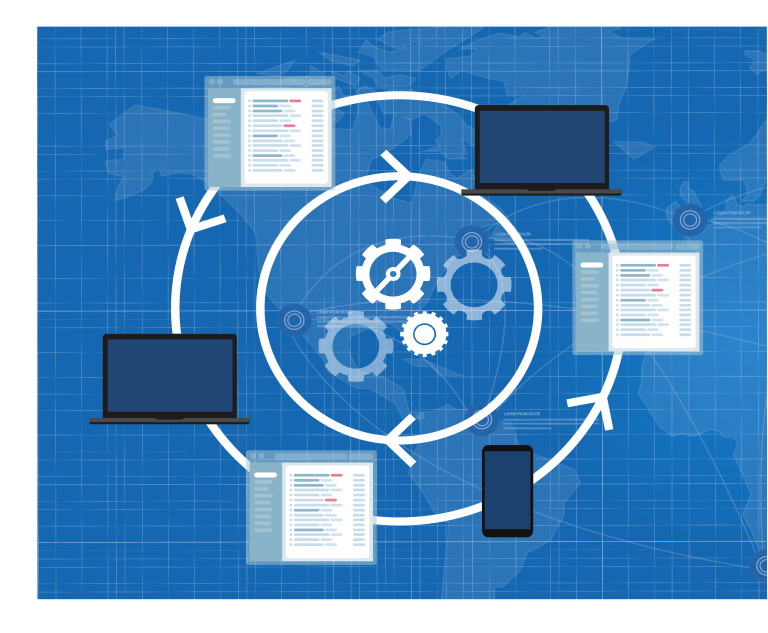WMO Hydrological Observing System (WHOS) Phase II
WHOS Phase II provides a fully WMO Information System (WIS)-compliant services-oriented framework linking hydrologic data providers and users through a hydrologic information system of systems enabling data registration, discovery and access.
The Initial Implementation Plan for WHOS Phase II was endorsed by the WMO Executive Council (EC-70) in June 2018.
WHOS Phase II is designed to offer services that support the operational needs of NHSs as well as the broader scientific needs of the international hydrological community.
WHOS Phase II supports (1) publication of hydrological data on the Internet via web services, (2) brokering of hydrological data

published by heterogeneous data providers, and (3) discovery, access and use of hydrological data through the WHOS network. These WHOS capabilities recognize the original data sources and rely on the use of standardized web services and data formats, such as those stemming from the Open Geospatial Consortium (OGC), International Organization for Standardization (ISO) and WMO.
Data brokering aims at efficiently joining data from multiple heterogeneous sources, harmonizing them and providing real-time unified access to these data without copying them, and thus, avoiding data redundancy.
When fully implemented, WHOS Phase II will significantly fulfill the long-sought goal of hydrologists and water resources specialists worldwide to have simple access to hydrological data from those NHSs around the world that make their data freely and openly available.

A key component of the WHOS Phase II architecture is a “WHOS-Broker”, realized by leveraging the Discovery and Access Broker (DAB) technology. To learn more about DAB, please visit the GitHub repository of the DAB Community Edition (CE). This repository includes all consolidated and stable functionalities of the DAB.
WHOS-Broker harmonizes hydrological metadata, data and web services published by multiple heterogeneous data providers making them more discoverable, accessible, interoperable and reusable for end-users, their applications and tools.
WHOS-Broker supports various service interfaces and Application Programming Interfaces (APIs) that data providers and hydrological application builders can already leverage (e.g. OGC SOS, OGC CSW, OGC WMS, ESRI Feature Service, CUAHSI WaterOneFlow, DAB API, USGS RDB, OAI-PMH/WIGOS, THREDDS). New API and service protocols are continuously added to support new data providers web services and user applications with the aim of improving its interoperability. This is due to the WHOS-Broker being a modular and flexible framework designed considering the change/evolution of standards through time.
WHOS-Broker also uses the WHOS Hydrological Ontology for two different but related purposes:
1. Improved data discovery through semantic query augmentation.
A user can make a query through WHOS for a specific concept expressed in a specific language.
For instance, a user would like to query for discharge data in French - “débit”:
- By applying a normal discovery, only datasets that have been documented using French language (e.g. only coming from the French NHSs) will be found by the user.
- Instead, by applying a semantic discovery, the WHOS-Broker would get all the synonyms for “débit” from the WHOS Hydrological Ontology, including “discharge” and “streamflow” (in English), “portata” (in Italian), “caudal” (in Spanish), etc. Here, a combined query is executed by the WHOS-Broker, matching many more records from additional NHSs (e.g. Spanish, English and Italian ones).
2. Harmonized presentation of results through semantic metadata augmentation.
Records coming from the NHSs can be enriched by WHOS-Broker (at harvest time, or during result presentation), through the use of WHOS Hydrological Ontology.
E.g. a variable metadata element describing a specific published dataset coming from a French NHS may have been documented as “débit”.
- WHOS-Broker consults the WHOS Hydrological Ontology to search for concepts matching the textual information, in this case finding the “Discharge, stream” concept stemming from Ontology of the Consortium of Universities for the Advancement of Hydrologic Science, Inc. (CUAHSI).
- Further, it can also find an equivalent concept from the WMO Codes Registry - "River discharge”. These will be presented to the user, enabling a harmonized presentation of results.
Depending on user preferences, the user application may be displaying the concept definition coming from one ontology or another, as well as in the preferred language.
Two regional prototypes during WHOS Phase II located in the La Plata Basin in South America (WHOS-Plata) and in the Arctic Region (WHOS-Arctic) have now reached their final stage of implementation.
The implementation of regional prototypes has demonstrated how the WHOS implementation benefits the participating countries. Some of the main benefits are as follows:
- shared data are more discoverable, accessible, interoperable and reusable;
- uniform and up-to-date discovery and access to shared data through a single interoperable web service, thus overcoming challenges associated with data discovery and access from heterogeneous data sources;
- no additional development needed on the data user side, for the reuse of shared data with various hydrological tools and applications;
- as a result of a uniform discovery and access to shared data, national and regional forecasting and modelling systems can be more easily built;
- making use of the WHOS Hydrological Ontology, WHOS expands and augments metadata in support of building trust in shared data and their more accurate use;
- WHOS development, maintenance and support are provided by the WMO community.
